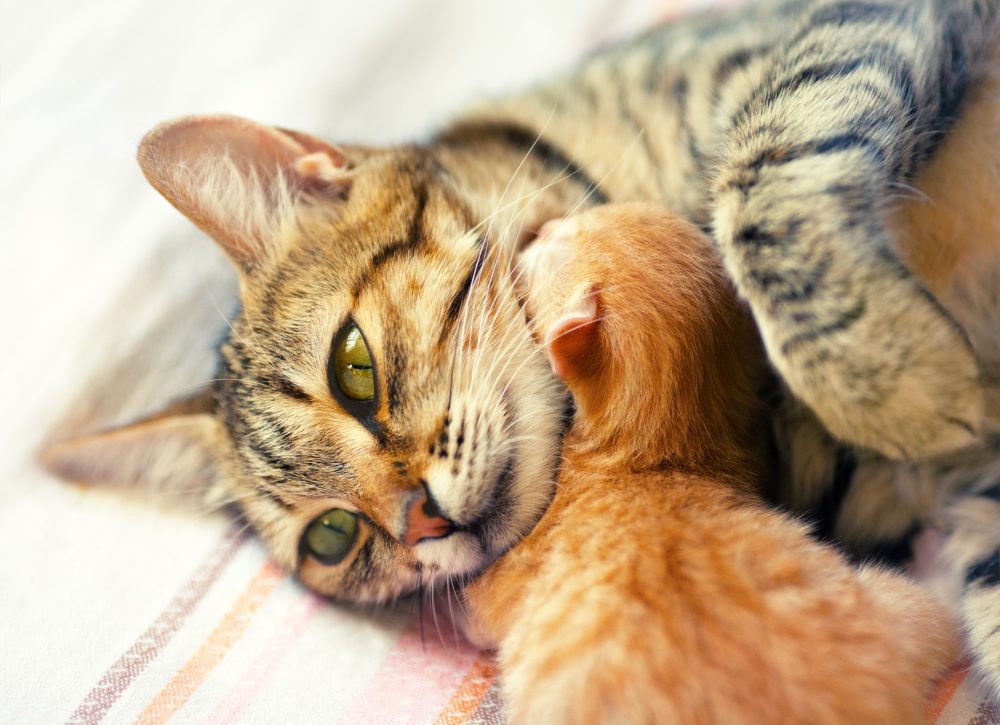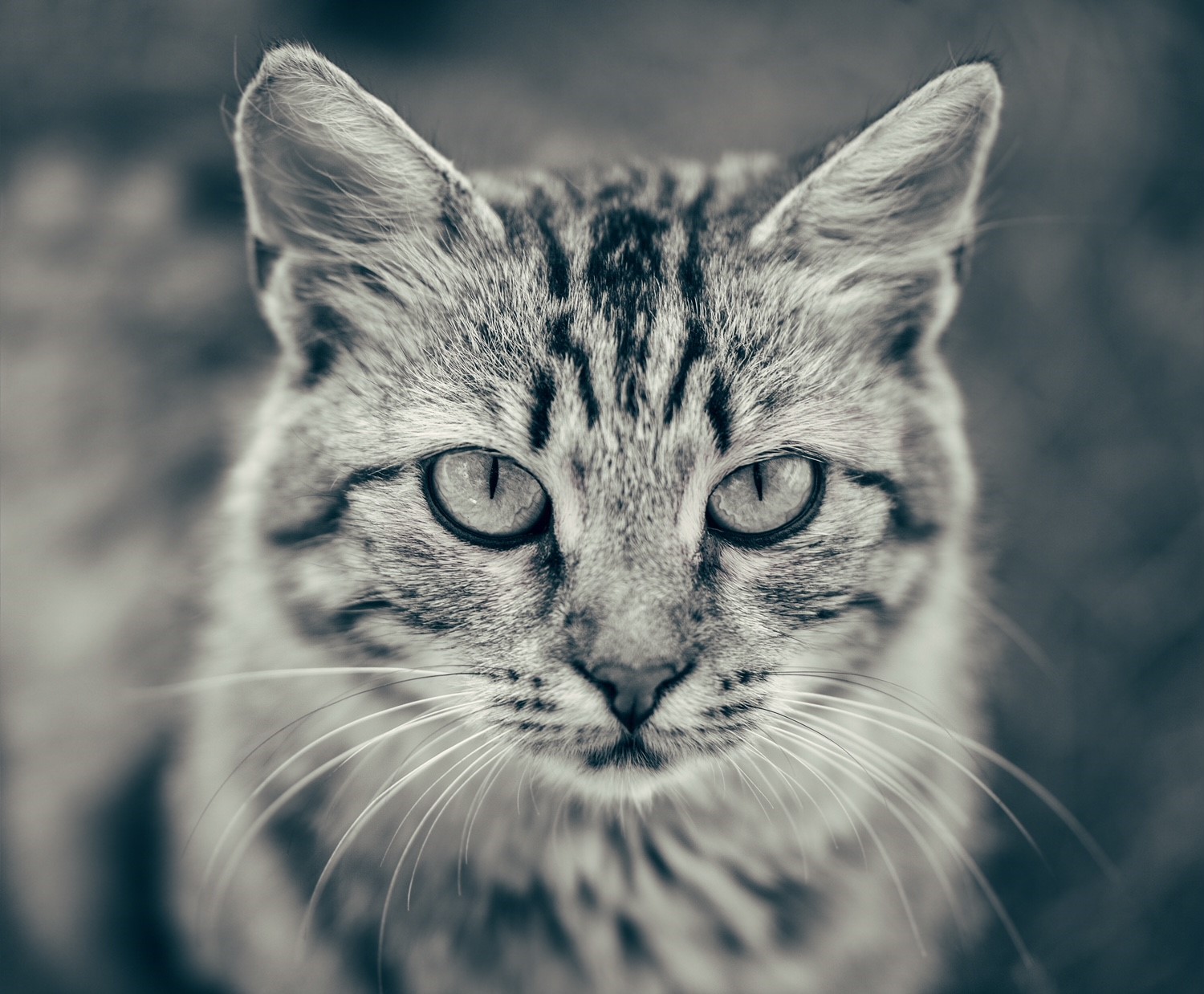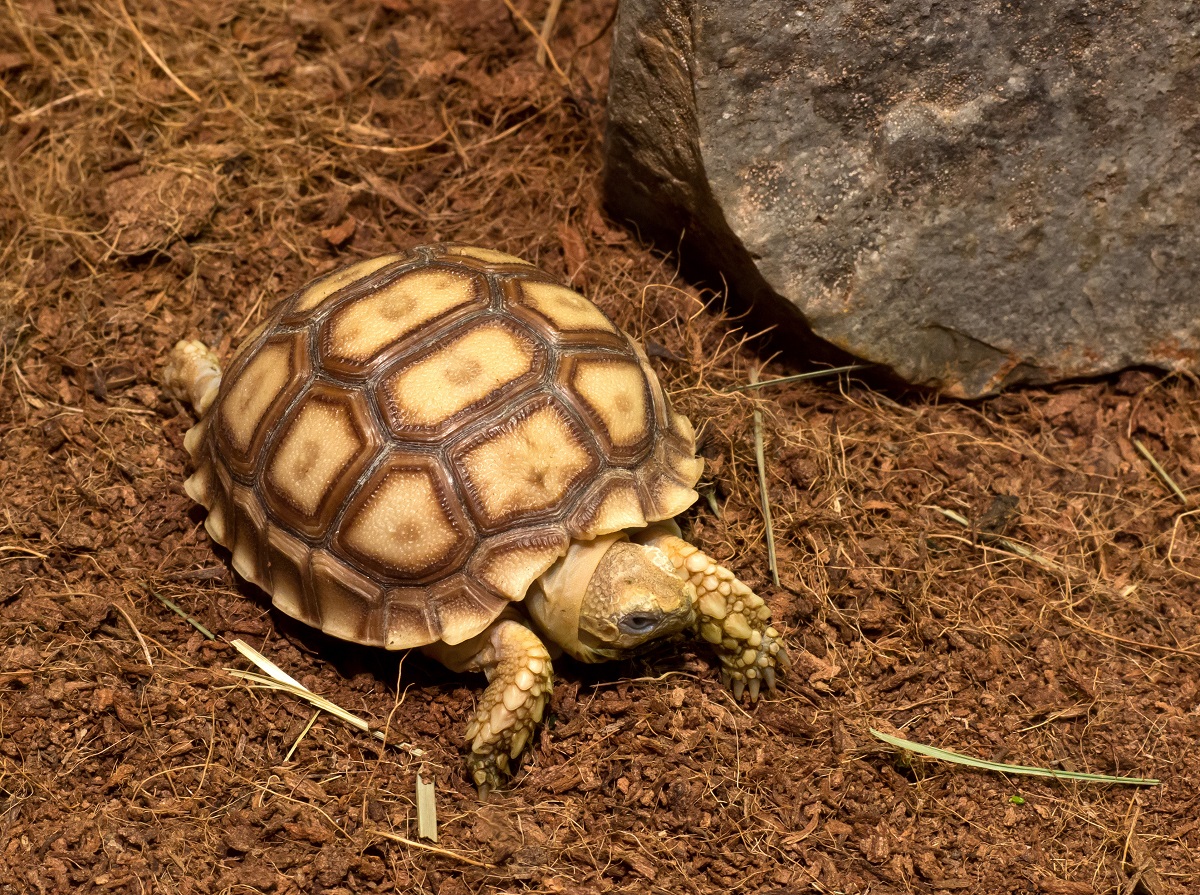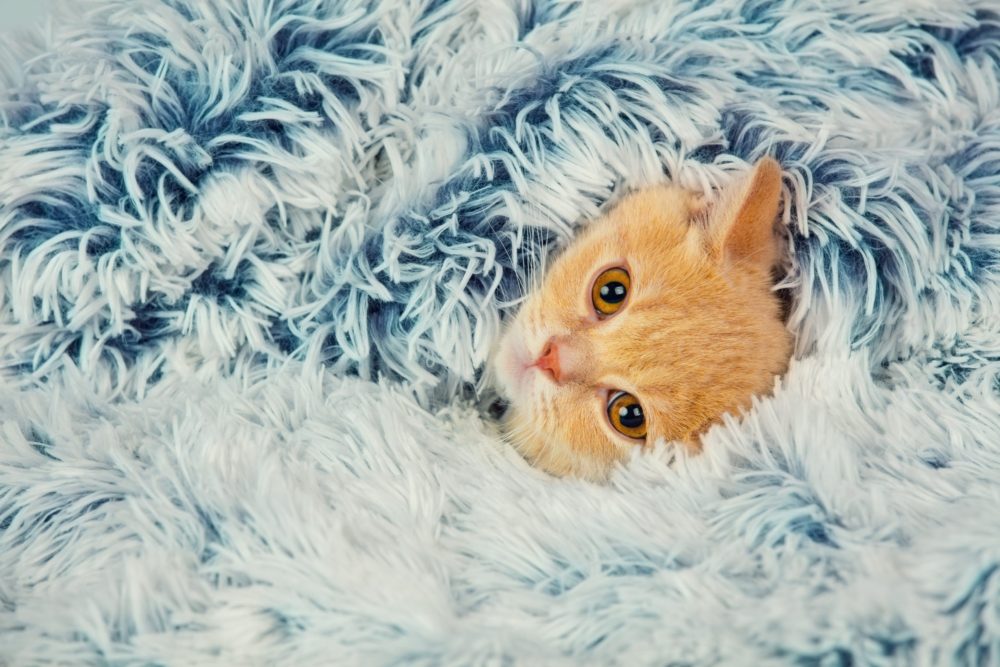
How fast can a cat run? What is a cat running wheel?
We’ve seen both our cats running at what seems to be extremely fast speeds. Sometimes it seems for fun, and other times they are running back to the safety of the indoors. Whatever the reason it certainly sparked our curiosity as to how fast can a cat actually run?
A domestic cat can run as fast as 30 miles per hour (48 kilometres per hour)! This is not a speed they can maintain for a long time, more a short spurt of speed. A cat can usually run at their top speed only for a minute or so before needing to stop. To compare this with how fast a human can run, Usain Bolt, the world class Olympic athlete, ran at a speed of 27.8mph (44.72 km/h) in 2009. Looking outside the scope of the domestic cat, the fastest wild cat is the cheetah. They can run at a staggering 75 mph (120 km/hr) making the cheetah the fastest land animal on the planet.
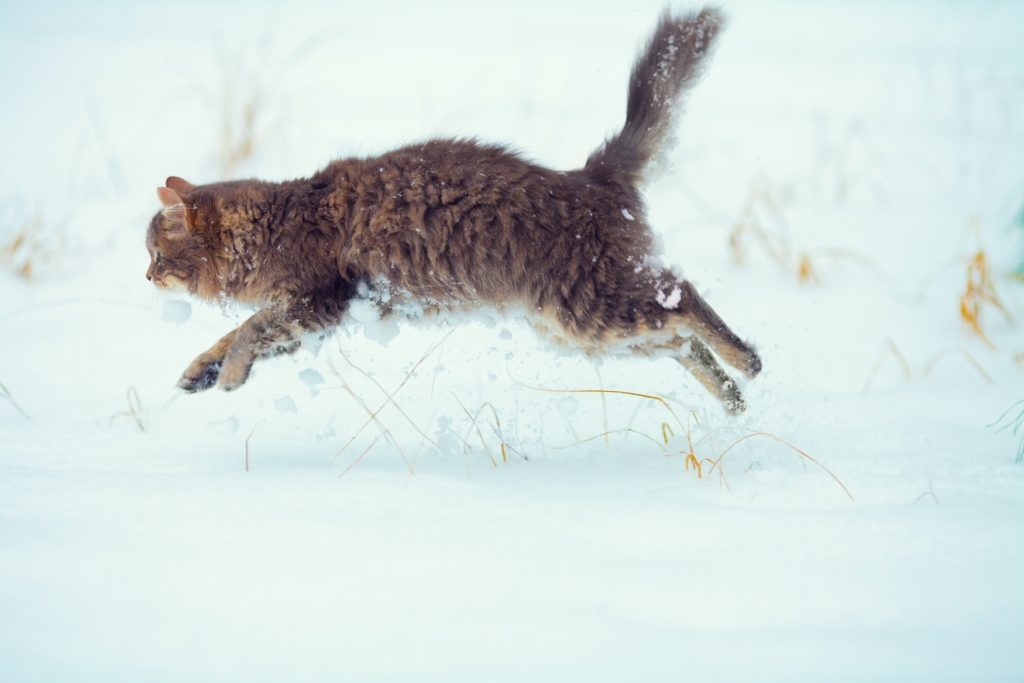
When would a cat need to run fast?
Although cats spend a high proportion of their day napping and sleeping there are times when they need to get up and make a quick sprint:
- To catch a prey. Some prey such as a bird or a mouse move quickly and suddenly, and so cats need speed to chase and catch the hunted animal.
- To escape from danger. Speed is also required to escape from a dangerous situation such as a chasing dog or a threatening predator.
- When feeling scared. If a cat feels scared and vulnerable, they will run to seek shelter or to hide. A thunderstorm, or an unexpected water hose or anything that threatens their feelings of security can frighten a cat.
How does a cat’s body make them such good sprinters?
A cat’s body is designed for speed in short bursts. The long periods spent dozing ensures there is a reserve of energy ready to call upon when a running surge is needed. Key features of a cat’s body which makes them excellent sprinters are:
- powerful back legs for strength,
- an agile spine for flexibility,
- claws, which provide traction when needed, and
- excellent balance which means they can land well and adapt to the surface as they run
When a cat walks, his left legs move in synch, then both his right legs, this is what gives cat such a good balance. This technique changes when a cat shits to sprint mode. Both back legs move in front of the front legs, as if he is about to take off! A combination of the flexible spine and strong back legs make this transition from casual stroll to fast sprint possible and effective.
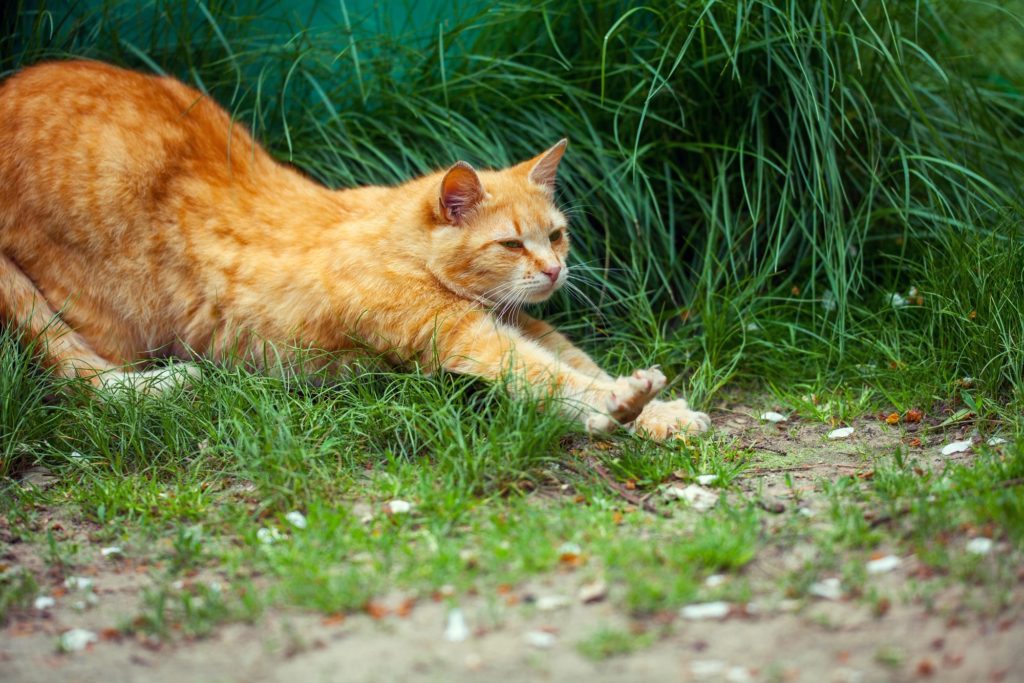
What are the fastest cat breeds?
Although all cats have the ability to run quickly, some breeds are faster than others. The quickest breeds of domestic cats are:
Egyptian Mau
This is the fastest domestic breed in the world and is the breed that will reach the top speed of 30mph. Their speed and strength make them excellent at jumping high, effortlessly, too. They are a relatively rare breed. Interestingly, their front legs are slightly shorted than their back legs. They also have a skin fold under their belly which enables the back legs to stretch further.
Savannah
This is a hybrid breed, a cross between a domestic cat and a serval, which is a wild African cat. Savannah cats are extremely athletic and need a lot of exercise. See our information below on cat wheels which are excellent for breeds which require plenty of physical stimulation.
Abyssinian
Another high energetic breed are the Abyssinian cats. A slender cat breed with very long legs in proportion to their bodies. They are highly intelligent and will require a great deal of mental and physical stimulation. They are also great for learning new tricks!
Oriental
This breed is closely linked to the Siamese. Their elongated, slender bodies are very muscular, and they are excellent at jumping onto high places. They are very loyal cats, but this loyalty will demand a lot of attention and exercise.
Somalis
Somalis have bushy tails and large eyes and are often referred to as the ‘Fox Cat’. The are closely related to the Abyssinian breed except that Somalis are long haired. This breed also has long legs and muscular bodies and enjoy plenty of exercise.
Manx
The Manx cats are famously known as the breed with no tail. Originating from the Isle of Man, theses care are excellent hunters. Farmers, and ships, sought this breed for their hunting abilities to keep rodents at bay.
Bengals
This breed is a mix of hybrid domestic cats and the Asian leopard cat. They love to play for hours on end and have a fondness of playing with water too. They are very inquisitive and curious and love to climb high.
Siamese
The Siamese is one of the oldest cat breeds in the world originating from Thailand. They are generally fun loving, playful, highly intelligent and very demanding. They will follow their owners around for most of the day and don’t like to be alone for long periods of time.
Ocicats
These medium to large cats were bred from Siamese, Abyssinians and American Shorthairs. Again, a very playful cat who loves company. Its muscular physique makes it a fast runner. They travel well and love water!
A common feature of all the above breeds is most definitely their boundless energies. So how can owners ensure that these breeds are physically and mentally stimulated enough to maintain their cat’s fitness and happiness? One of the solutions is to provide your cat with a cat wheel.
What is a cat wheel?
Cat wheels are increasing in popularity, particularly amongst owners of highly energetic breeds such as those listed above. It can be challenging for owners of indoor cats to ensure their physical stimulation is satisfied especially those cats with endless energy. A lack of exercise and a lack of mental stimulation can create health and behavioral problems in cats. A cat wheel therefore can be the perfect answer!
Cat wheels are essentially an exercise wheel that your cat can hop on and off as she pleases. Cat wheels can provide ample opportunity for your cat to walk or run for as long as they feel they want to whilst keeping them in the confined safety of the indoors. The cat wheel varies in size, colours and styles. Some wheels are mounted on walls, others free standing, it simply finding what wheel suits your cat’s size and lifestyle the best.
Top tips for purchasing a cat wheel.
As cat wheels can be an expensive item it is important to do your research thoroughly first. Here are our top tips to consider when considering your cat wheel options:
- Shop around. Check out deals and sales both online and in pet stores. Consider looking for second-hand cat wheels on online buy-and-sell sites.
- Many cats will love their new cat wheels – other cats may simply just not like it. Given they can cost hundreds of dollars to buy it is recommended to purchase a wheel with a returns policy.
- Do your homework beforehand. Your cat’s weight, length and height will be a factor in determining the size of wheel suitable for your cat. Check out our article ‘How to weigh your cat’ for tips on this. It is important that the wheel is large enough for your cat and that it is suitable for your cat’s weight. Many wheels have a weight limit of 12 kilograms (25 pounds).
- Consider where the cat wheel will go in your house. Cat wheels are best placed on hard flooring or thin carpets.
- Be patient when introducing your cat to this new toy! While some cats will jump straight on and enjoy the thrill of running, others may be wary of the wheel. Use treats or toys to entice your cat onto the wheel and to reward when successful. Be mindful that it may take some cats up to a month to learn to walk or run on the cat wheel.
- Check the ease in cleaning the cat wheel. Most are wipeable and durable.
- If you decide to make your own cat wheel, ensure that the materials used, and its design and placement are cat safe and friendly.
Other articles you may find interesting:
How to keep your cat happy – 10 key factors
18 games to play with your cat
Creating the ultimate cat friendly garden – 10 top tips
Why do cats climb trees? How can I stop my cat climbing trees?
